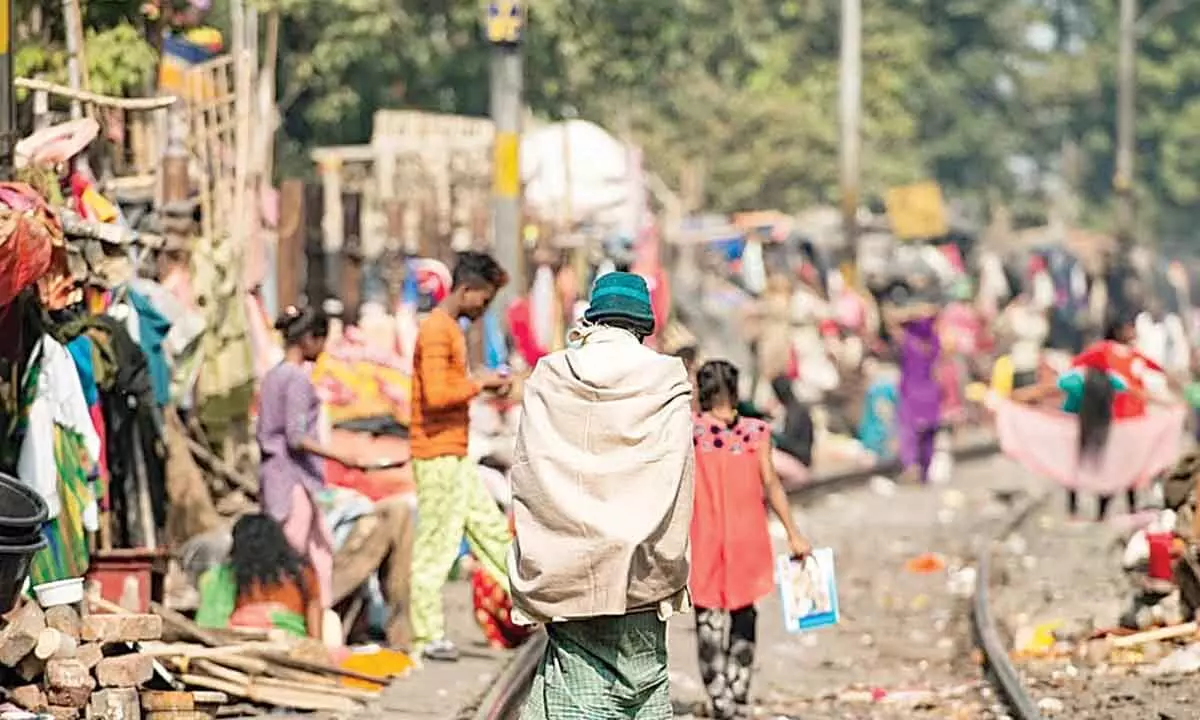India makes strides in human development
While India's rise in the Human Development Index (HDI) presents a welcome opportunity for the current government, the data also reveals areas requiring further focus
image for illustrative purpose

The timing of India's improvement in the Human Development Index (HDI) just before the general election could be beneficial for the current government. The rise in HDI signifies progress in life expectancy, education, and income. However, there's still room for improvement, particularly in gender equality and female labor force participation
In what can come in handy to the current dispensation in New Delhi, just before the forthcoming general election, India moved up its position few notches up in the crucial Human Development Index, in the UNDP HD report. India has been showing signs of significant progress and improvements across all HDI indicators – life expectancy, education, and Gross National Income (GNI) per capita, much to the pleasure of the Modi 2.0 government.
In FY22, India saw improvements across all HDI indicators – life expectancy, education, and Gross National Income (GNI) per capita. Life expectancy rose from 67.2 to 67.7 years, expected years of schooling reached 12.6, mean years of schooling increased to 6.57, and GNI per capita saw an increase from $6,542 to $6,951.
Moreover, India demonstrated progress in reducing gender inequality. India’s GII value of 0.437 is better than the global and South Asian averages.
“India has shown remarkable progress in human development over the years. Since 1990, life expectancy at birth has risen by 9.1 years; expected years of schooling have increased by 4.6 years, and the mean years of schooling have grown by 3.8 years. India's GNI per capita has grown by approximately 287 per cent. This highlights the country’s commitment over time to accelerate economic growth and improve the quality of life for its citizens. But there is room for improvement. With a renewed focus on women-led development, India can further unlock socio-economic progress, paving the way for a brighter and more equitable future for all,” said Caitlin Wiesen, Resident Representative, UNDP India.
With an HDI value of 0.644, the latest HDR places India in the medium human development category. Between 1990 and 2022, the country saw its HDI value increase by 48.4 percent, from 0.434 in 1990 to 0.644 in 2022. India has also shown progress in reducing gender inequality and ranks 108 out of 166 countries in the GII 2022. The GII measures gender inequalities in three key dimensions – reproductive health, empowerment, and labour market.
The country's GII value of 0.437 is better than the global average of 0.462 and the South Asian average of 0.478. India’s performance in reproductive health is better than other countries in the medium human development group or South Asia. India's adolescent birth rate in 2022 was 16.3 (births per 1,000 women ages 15-19), an improvement from 17.1 in 2021.
Interestingly, the 2023-2024 HDR builds on the 2021–2022 Human Development Report findings, which saw the global HDI value fall for the first time—two years in a row. The report reveals that while rich countries attained record human development, half of the poorest remain below their pre-crisis level of progress.
Looking at globally, the global overall Human Development Index (HDI) value is greater than what it was in 2019. But that doesn’t mean the world has recovered fully from the effects of the Covid-19 pandemic, compounded by other global crises. The 2023 figure remains below the level that was predicted before the pandemic. Essentially, the world is yet to reach the level of human development that could have been expected had the pandemic not happened.
However, from India’s perspective, one pain point is that the country still has one of the largest gender gaps in the labour force participation rate—a 47.8 per cent difference between women (28.3 p[er cent) and men (76.1 per cent), which needs to be addressed urgently.

